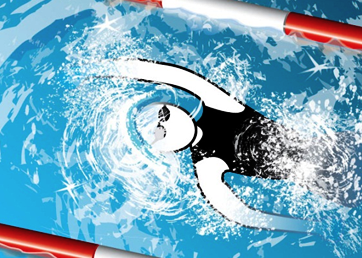- Contact person: Kamiar Aminian
- People involved: Farzin Dadashi
- Partners: Lausanne natation
- Funding source:

Overview
The biomechanics of swimming and aquatic activities remained poorly explored due to technical problems of motion capture in water. We have chosen Front-crawl and Breast-stroke swimming techniques as two representative support activities for the general study of aquatic locomotion. A new wearable and waterproof system based on inertial sensors has been developed by our team, where detected kinematic signals during swimming will be processed using dedicated algorithms. Pertinent metrics related to performance, coordination and energy expenditure will be extracted and use to model the biomechanics of the swimming activity.
Methods
We introduced a novel approach for automatic temporal phase detection and inter-arm coordination estimation in front-crawl swimming using inertial measurement units (IMUs). The validity of our method was examined by comparison against a video-based system.
Three waterproofed IMUs (composed of 3D accelerometer, 3D gyroscope) were placed on both forearms and sacrum of the swimmer. We used two underwater video cameras in side and frontal views as our reference system. Two independent operators performed the video analysis. To test our methodology, seven well-trained swimmers performed three 300-m trials in a 50-m indoor pool. Each trial was in a different coordination mode quantified by the index of coordination. We detected different phases of the arm stroke by employing orientation estimation techniques and a new adaptive change detection algorithm on inertial signals. The difference of 0.2±3.9% between our estimation and video-based system in assessment of the index of coordination was comparable to experienced operators’ difference (1.1±3.6%). The 95% limits of agreement of the difference between the two systems in estimation of the temporal phases were always less than 7.9% of the cycle duration. The inertial system offers an automatic easy-to-use system with timely feedback for the study of swimming.